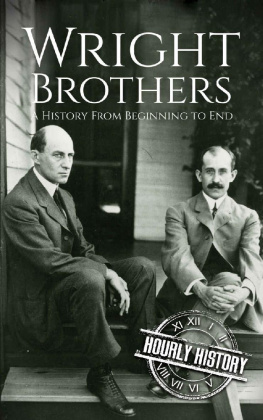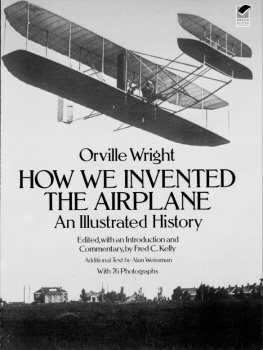The Lost History of the
LADY
Aeronauts
For Ursula Taylor
The Lost History of the
LADY
Aeronauts
Sharon Wright
First published in Great Britain in 2018 and
PEN AND SWORD HISTORY
An imprint of
Pen & Sword Books Ltd
Yorkshire Philadelphia
Copyright Sharon Wright, 2018, 2021
ISBN 978 1 39900 538 8
ePUB ISBN 978 1 39900 539 5
Mobi ISBN 978 1 39900 540 1
The right of Sharon Wright to be identified as the author of this work has been asserted by her in accordance with the Copyright, Designs and Patents Act 1988.
A CIP record for this book is available from the British Library All rights reserved. No part of this book may be reproduced or transmitted in any form or by any means, electronic or mechanical including photocopying, recording or by any information storage and retrieval system, without permission from the Publisher in writing.
Pen & Sword Books Ltd incorporates the imprints of Pen & Sword Archaeology, Atlas, Aviation, Battleground, Discovery, Family History, History, Maritime, Military, Naval, Politics, Railways, Select, Social History, Transport, True Crime, Claymore Press, Frontline Books, Leo Cooper, Praetorian Press, Remember When, Seaforth Publishing and Wharncliffe.
For a complete list of Pen and Sword titles please contact
Pen and Sword Books Limited
47 Church Street, Barnsley, South Yorkshire, S70 2AS, England
E-mail:
Website: www.pen-and-sword.co.uk
Or
PEN AND SWORD BOOKS
1950 Lawrence Rd, Havertown, PA 19083, USA
E-mail:
Website: www.penandswordbooks.com
Foreword
If a work of art is never finished but merely abandoned, then exploring lost womens history can always be resumed. When Balloonomania Belles: Daredevil Divas Who First Took To The Sky appeared in hardback, there was a gratifying reception from readers who shared my astonishment that these courageous female pioneers had lain forgotten for so long. I couldnt shake the conviction, though, that there were still one or two mysteries to solve, some curious clues and overlooked events that could reveal yet more about these marvelous women.
So began the evolution of this updated paperback. Fresh detective work led to a discovery that finally explodes a sexist 236-year-old myth about Letitia Sage, first English woman to fly. I first encountered Lily Cove as a young reporter in West Yorkshire and its a story I cannot leave alone. So when I took another look at her inquest, I was forced to see the Haworth horror story in a whole new light. Then there was Margaret Graham, whose incredible life story I laboured over and whose paupers grave I visited. To my great delight I was able to talk with Mrs Grahams great, great granddaughter Ursula Taylor. Ursula was generous in discussing her family history, particularly in filling in the gaps around Margarets death and sharing portraits of the daring diva. She began investigating her ancestor with her late husband Hugh and their son, Matthew Taylor, kindly helped us to compare notes. Mrs Graham lies in an unmarked grave but her glorious story lies in this book.
More light on how balloonomania swept through the lives and minds of Georgian women was shed by Chawton House, which holds a collection of works by early women writers. The twin joys of happenstance and collaboration led to Mrs Sage appearing in their excellent Man Up! exhibition, while I was invited to explore rare and beautiful books by female contemporaries of the aeronauts. I am indebted to chief executive Katie Childs for drawing my attention to a work by Harriette Wilson, to Emma Yandle, curator and collections manager, for her guidance and insight, and to communications and public engagement manager Clio OSullivan and Louisa Carpenter, former visitor experience manager, for embracing balloonomania.
I could not have written this book without the unfailing help and support of Brian Riddle, chief librarian of the National Aerospace Library in Farnborough, and John Baker, archivist at the British Balloon Museum and Library, the official museum of the British Balloon and Airship Club. I am indebted to the trustees of the Dolly Shepherd Pioneer Parachutist Archive, Julie Carlsen of the Berg Collection at the New York Public Library, Haworth historian Steven Wood and Dan Sudron, archivist at the West Yorkshire Archive Service, Calderdale, for his transcription of the entry in Anne Listers diary (reference SH:7/ML/E). Also to Lucinda Dharmasena, Ann Dinsdale, Abigail Halley, Julie Akhurst, Diane Park and Tim Harrison, and Laura Hirst at Pen & Sword for their encouragement and US balloon legend Bob Sparks for our unforgettable day in Philadelphia. Thanks too to Jennifer Jones, retired chartered librarian, translator of Enlightenment French and public records expert. If there are any errors in this book, they are mine alone.
Welcome to the revised and updated and yet more uplifting story of early female flight. The lady aeronauts are not lost any more.
Sharon Wright, Spring 2021
Chapter 1
Wonder Women
In 1783 the balloon went up in more ways than one. Radical thinking swept across Europe and America, the spirit of change churning the air of politics, philosophy, fashion and art. The months were so stuffed with marvels they became known as an annus mirabilis, year of wonders. A giant comet cut a fiery path across the heavens and epic volcanic eruptions in Iceland sent sulphur pouring into the jet stream to cause weather chaos. Events in the sky above Enlightenment Europe were as dramatic as those on the earth when most wonderful of all, humans learned how to fly. A beautiful balloon hung in the French sky at Versailles above an astounded crowd of Parisians. As brothers Joseph-Michel and Jacques-tienne Montgolfier unlocked the secret of soaring above the earth, the watching women, from Queen Marie Antoinette down, shared a single thought: the eighteenth century equivalent of whats not to love?
Balloonomania was unleashed, spreading like wildfire through France, then all Europe and quickly on to America. Commentators also called it balloon mania and when it proved so infectious, balloon influenza. It was a craze, a rage and all so maddeningly thrilling it held European and American society in thrall. From the earliest days, women were in on the act. The first female aeronauts were flamboyant, fashionable or just plain fearless as they embraced ballooning and all it promised. The craze swept the world and its pioneering women in the late eighteenth and early nineteenth centuries, evolving into a fabulous story of female flight that stretched across 120 years before the first aeroplane left the ground.
Balloon legend puts women at the very dawn of ballooning. One theory is that Joseph Montgolfier saw a washerwoman place a petticoat on a wicker frame to dry over a stove and it began to rise. Another has the unmentionables of Madame Montgolfier drying as her inventive husband became fascinated by how smoke drifted upwards to lift a chemise. As he and tienne puzzled over how to prevent a smoke-filled paper bag from leaking, did the widow next door poke her head through the window to suggest they tie the bottom? The story was good enough for Victorian balloonist Gertrude Bacon but whatever their real role at the birth of ballooning, women were at the heart of everything that followed. Down on the ground they were trapped in subordinate roles imposed by the law and rules of society. Up in the sky they were free.













